5 Cheap And Delicious Dinners To Cook This Week
Four people, five nights, $50. It doesn't get any cheaper than that.

Use the grocery list below to make the five dinner recipes in this post over the course of a week in whatever order you like.
Your safest bet is to make them all within a week of grocery shopping to ensure that the ingredients stay fresh. It's not the biggest deal if you do it over the course of 10 days or so.
If you don't plan on making the arugula salad right away, consider not buying your arugula until a day or two before, since the greens might start to wilt after four or five days in the fridge, even in an sealed bag. Also, the parsley probably won't keep for 10 days (though if you store it with the stems in water, like flowers, in the fridge, it might). Keep your meat and fish in the freezer whether you cook this over a week or 10 days, but put it in the fridge two days before you plan to use it.
Also, though the recipes call for lots of the same ingredients, no recipe calls for leftovers from another. So, you can cook them in any order.
Here are all the groceries you'll need to cook these five dinners:
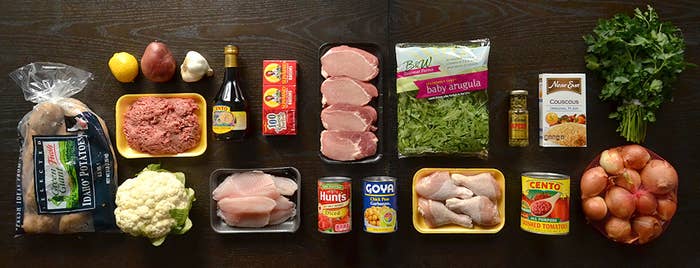
Pssst… I’m assuming you have olive oil, kosher salt, and freshly ground pepper.
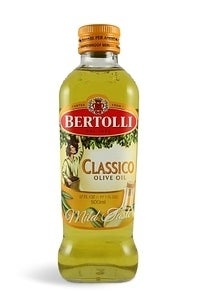
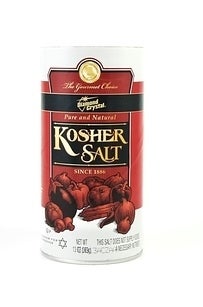

PRODUCE
Cauliflower, $2.99
Garlic, 1 head, $.79
Lemon, $.69
Yellow Onions, 3-pound bag, $1.99
Flat-leaf parsley, $.99
Anjou pear, $.69
Russet potatoes, 5-pound bag, $3.49
Arugula, 5-ounce bag, $2.99
MEAT & SEAFOOD
Frozen ground beef, 1 pound, $4.29
Chicken drumsticks, 4 (1 pound), $2.29
Boneless pork chops, 4 (1 pound), $5.99
Frozen tilapia fillets, 1 pound, $6.99
PANTRY STAPLES
Raisins, 6 ounces, $2.69
Couscous, 10-ounce box, $1.99
Garbanzo beans, 16-ounce can, $1.00
Canned diced tomatoes, 14.5-ounce can, $1.00
Canned crushed and peeled tomatoes, 28-ounce can, $1.59
Capers, 3-ounce jar, $1.99
Pimento-Stuffed Green Olives, 5.75-ounce jar, $2.19 (not pictured)
Balsamic Vinegar, 8.5-ounce bottle, $3.29
GROCERY TOTAL: $49.92 (based on Indianapolis, Ind., prices at peapod.com)
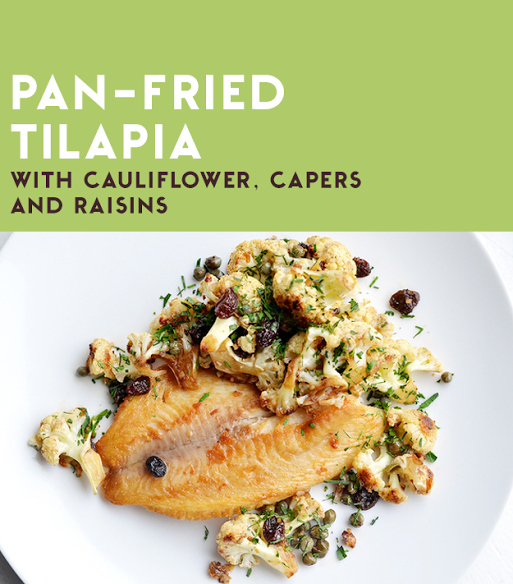
Pan-Fried Tilapia with Cauliflower, Capers, and Raisins
Serves 4
Recipe by Teri Tsang Barrett
INGREDIENTS
1 head cauliflower, cored and broken into bite-size pieces
3 tablespoons extra-virgin olive oil
Kosher salt and freshly ground pepper
1 clove garlic, minced
3 tablespoons drained capers
2 tablespoons balsamic vinegar
1/4 cup raisins (about 1 ounce)
Canola oil or vegetable oil, for frying
4 tilapia fillets, thawed, (about 1 pound)
1/4 cup loosely packed flat-leaf parsley leaves, chopped
PROCEDURE
Preheat the oven to 425˚F. On a rimmed baking sheet lined with parchment paper, toss the cauliflower with 2 tablespoons olive oil, and season with salt and pepper. Spread in a single layer, using two baking sheets if needed. Roast, turning once, until tender and golden, 30 to 35 minutes.
Meanwhile, in a medium saucepan, heat 1 tablespoon olive oil over medium heat. Add the garlic and cook, stirring, until aromatic and just beginning to color, about 30 seconds. Add the capers and cook, stirring, for 1 minute (Note: if the garlic starts getting too brown , take the mixture off of the heat immediately). Transfer to a large bowl.
Using the same saucepan, bring 3 tablespoons water and the balsamic vinegar to a boil over high heat. Add the raisins, cover, and let stand off of the heat for 5 minutes; the raisins should get soft and a little bit plump. Set aside.
During the last 5 minutes of roasting the cauliflower, heat 2 tablespoons canola oil or vegetable oil in a large cast-iron skillet* over high heat. Season the tilapia with salt and pepper. Make sure the oil is extremely hot before laying the fish in the pan. Working in batches, pan fry the tilapia on each side until golden, 3 to 4 minutes per side; drain on paper towels. Repeat with the remaining tilapia, adding the remaining 2 tablespoons olive oil to the pan, if needed (if you add oil, be sure to let it get hot before you add your fish to the pan).
Add the cauliflower to the bowl with the capers, then, using a slotted spoon, add the raisins; spoon in some of the balsamic vinegar mixture to taste, then toss.
Divide the tilapia among 4 plates, then spoon the cauliflower mixture on top. Sprinkle with the parsley.
*Note: A cast iron skillet works best because it retains heat, which means your pan won't cool down as much after the fish is added and you'll end up with a better sear. But, if you don't have a cast iron you can use a 12-inch stainless steel skillet instead.
Make sure your cauliflower is cut into uniform, bite-sized pieces, and that you don't crowd your baking sheet.

If your garlic starts to turn a little bit brown, don't panic. Throw the capers in right away and take the pan off the heat.

After 5 minutes in the hot balsamic liquid (off the heat) your raisins will be soft but they won't totally balloon up.
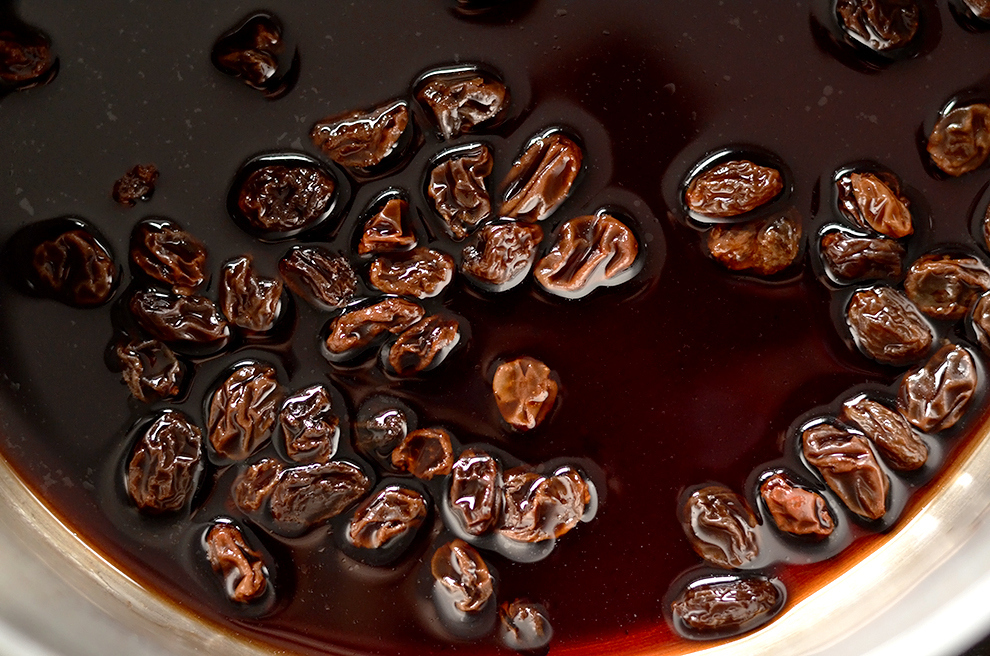
When you mix the cauliflower, raisins, and caper mixture together, add just enough of the balsamic mixture to coat the cauliflower without drowning it.

Pan-frying fish is super quick, and it can get messy. Set up everything you need before you put your fish in the pan.

When you're laying the fish in the hot pan, be sure to lay it down away from you, to avoid oil splattering on your skin.
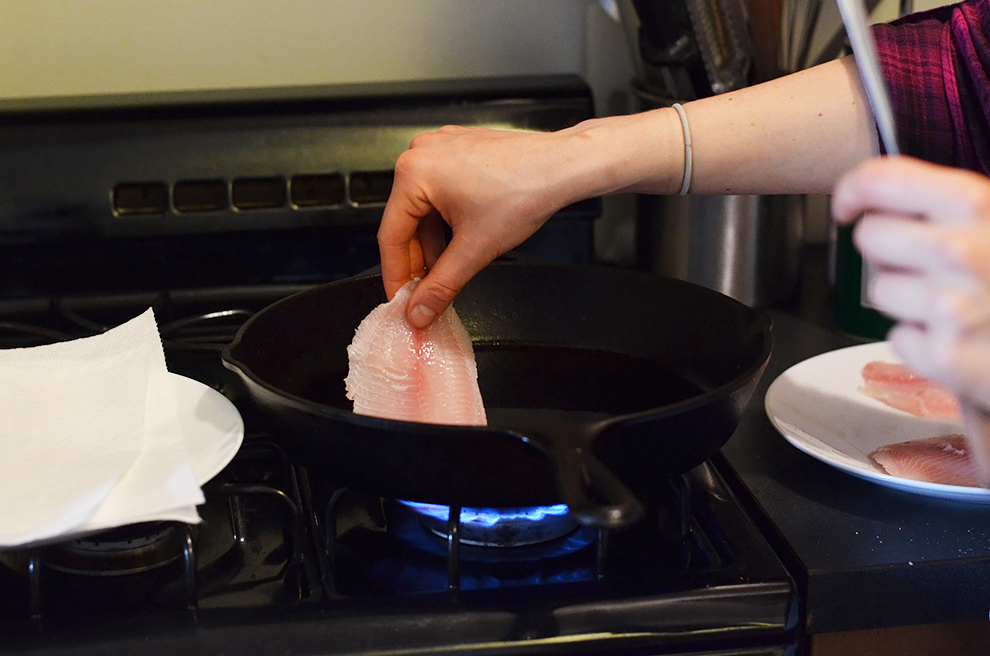
When your fish is browned around the edges and ready to flip, be sure to flip it away from you, again to avoid splatter.

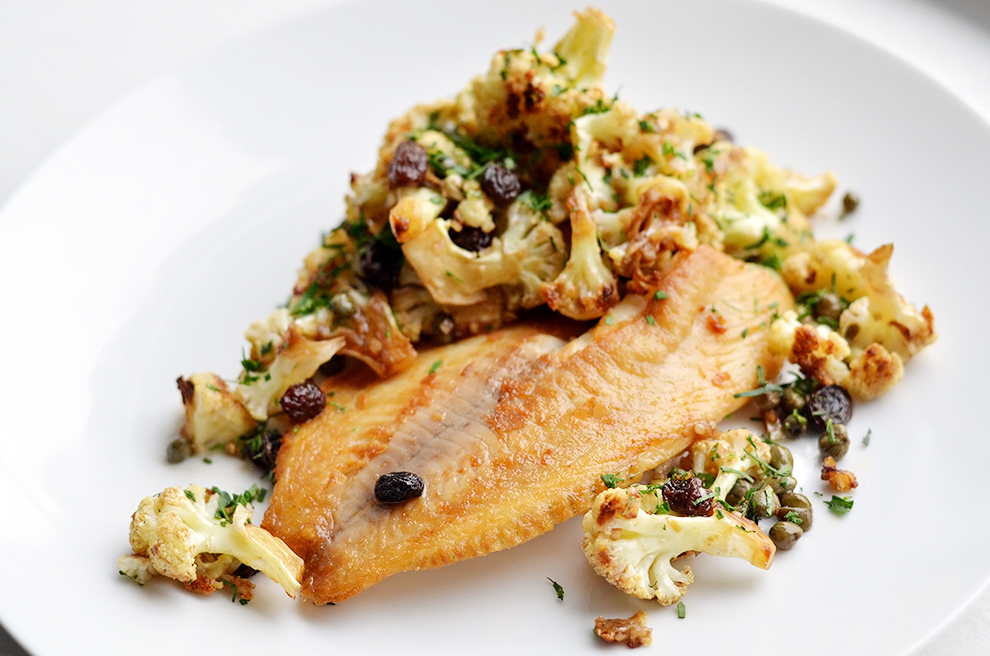
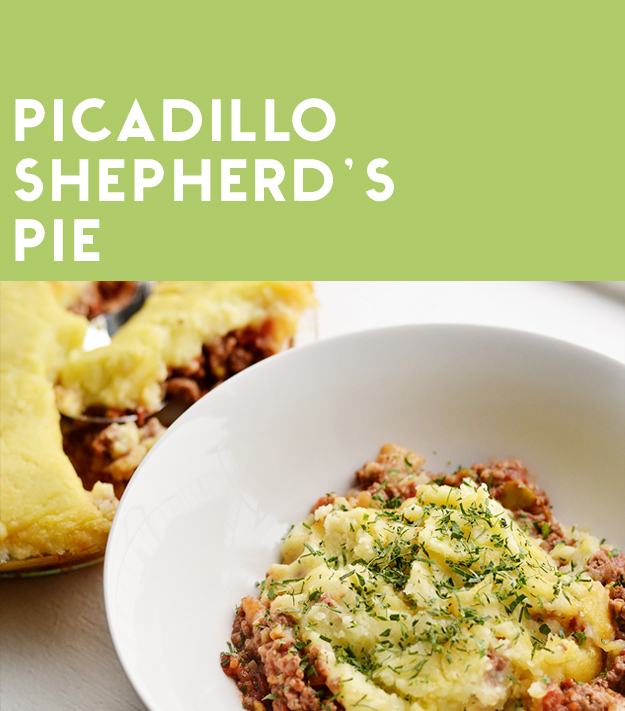
Picadillo Shepherd’s Pie
Serves 4
Recipe by Teri Tsang Barrett
INGREDIENTS
2 pounds small russet potatoes (6 to 7)
3/4 cup extra-virgin olive oil, plus more for brushing
Kosher salt and freshly ground pepper
1 onion, chopped into 1/2-inch pieces
5 cloves garlic, minced
1 pound ground beef
One 15-ounce can diced tomatoes
1/2 cup chopped green olives
1 tablespoon balsamic vinegar
2 tablespoons thinly sliced parsley leaves
PROCEDURE
Preheat the oven to 400˚F. Peel and cut the potatoes into 1/2-inch cubes. Place in a saucepan with 1 teaspoon salt and cover with water by 1 inch. Bring to a boil over high heat, then lower the heat to a simmer and cook until easily pierced with a fork, 10 to 12 minutes. Drain, then mash with ½ cup olive oil and season with salt and pepper.
While the potatoes are cooking, heat the remaining 1/4 cup olive oil in a large skillet over medium heat. Add the onion and cook, stirring, until the onion has started to soften, about 3 minutes. Add the garlic and cook for another minute. Add the beef, season with salt and cook, breaking it up, until no longer pink, 3 to 4 minutes. Stir in the tomatoes, olives and balsamic vinegar and cook, stirring occasionally, until thickened, about 10 minutes. Season to taste with salt and pepper.
Spread the beef filling evenly in a 9-inch pie plate. Spoon the mashed potatoes on top, then, using the back of a spoon, spread the potatoes into an even layer so that they form a seal between the beef filling and the edge of the pie plate. Brush the top with olive oil, then bake until golden around the edges, 25 to 30 minutes.
When boiling the potatoes, the water should only come an inch above the potatoes. Otherwise, it'll take forever to boil.
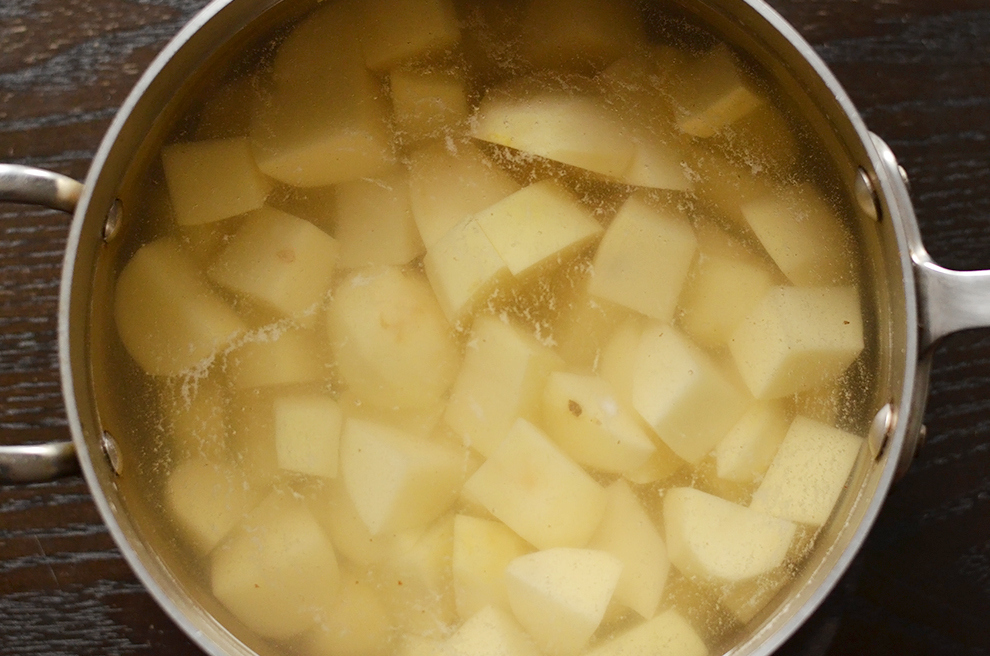
The mashed potatoes aren't going to be totally smooth and creamy, which is fine. They just need to be mashed enough to spread on top of the meat later.

Before you add the beef, your onions don't have to be soft all the way through. They'll continue to cook as you add other ingredients.

When you add your raw beef, spread it out as much as you can, and stir it occasionally as you cook it.
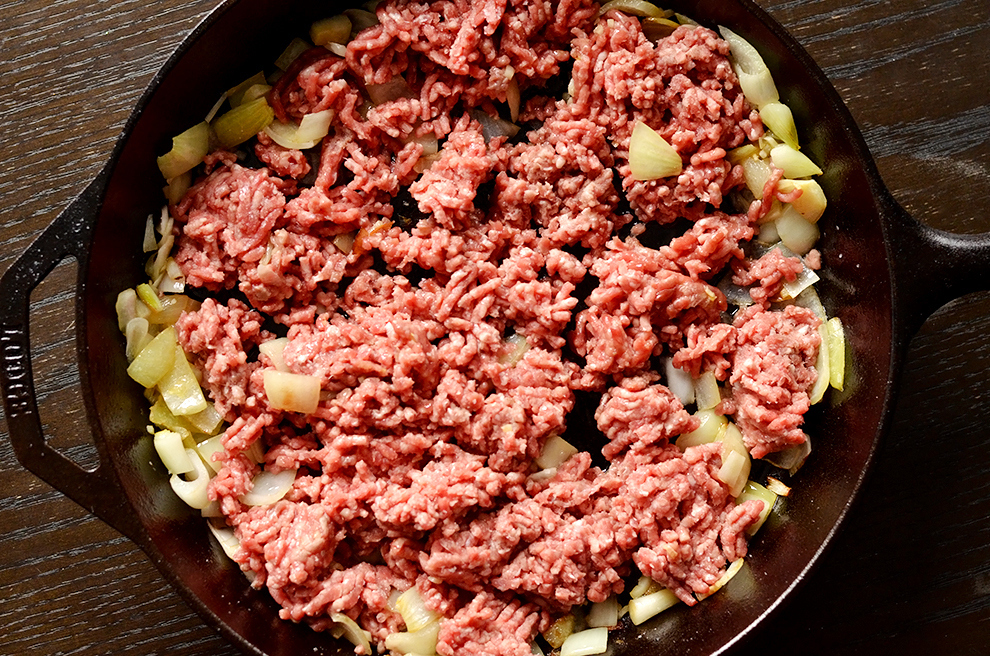
It should be pretty much cooked through before you add the rest of the ingredients.

Then, you'll add tomatoes, olives, and balsamic.
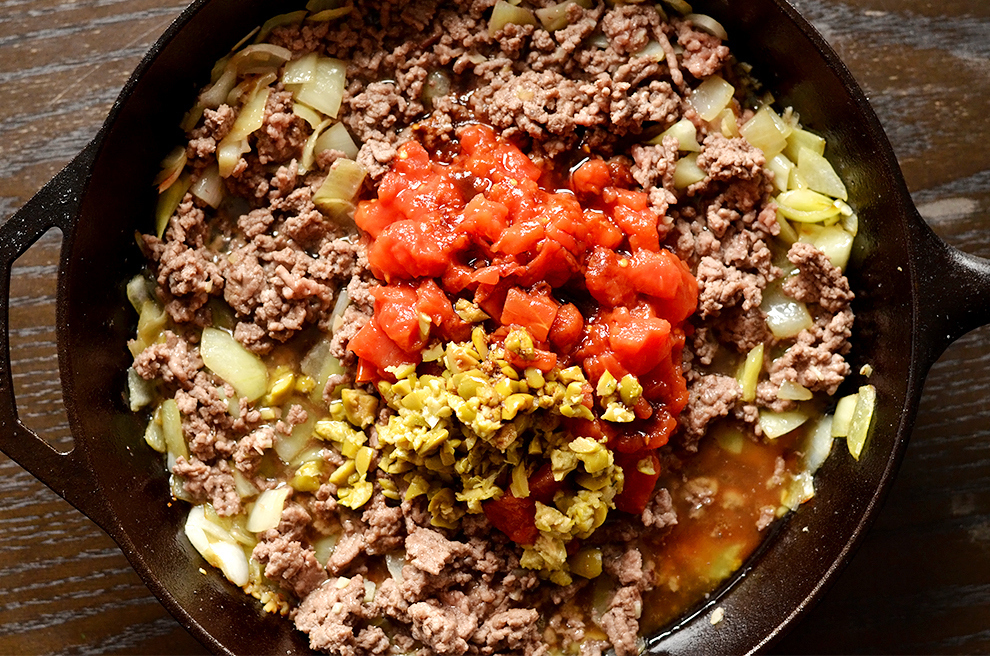
Mix everything together, and cook it until most of the liquid is gone.
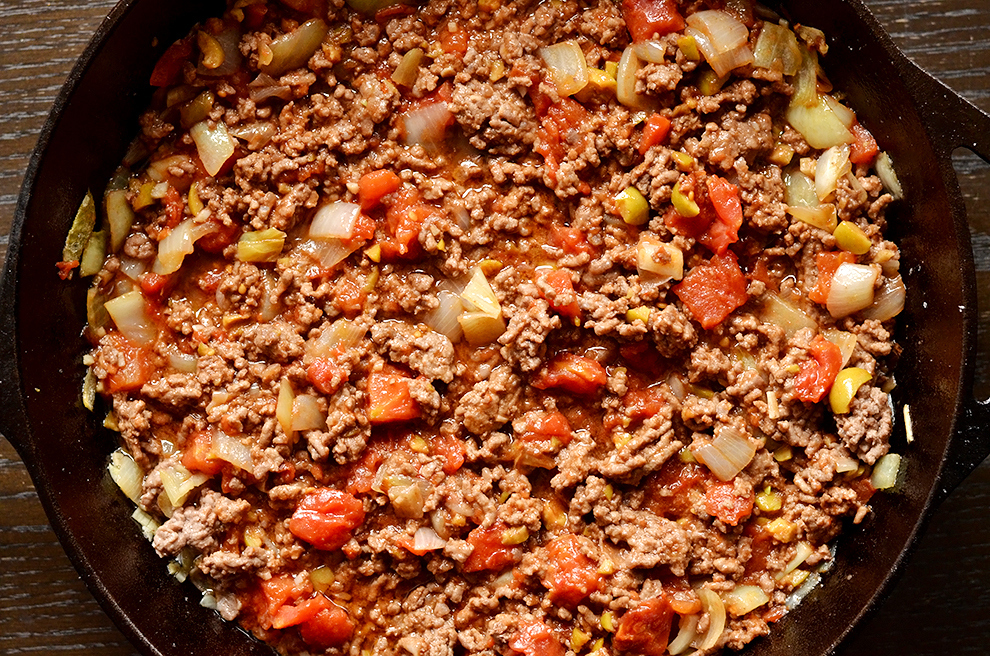
When you transfer the meat mixture into the pie plate, use a slotted spoon so that you leave some of the oil and liquid behind in the pan.
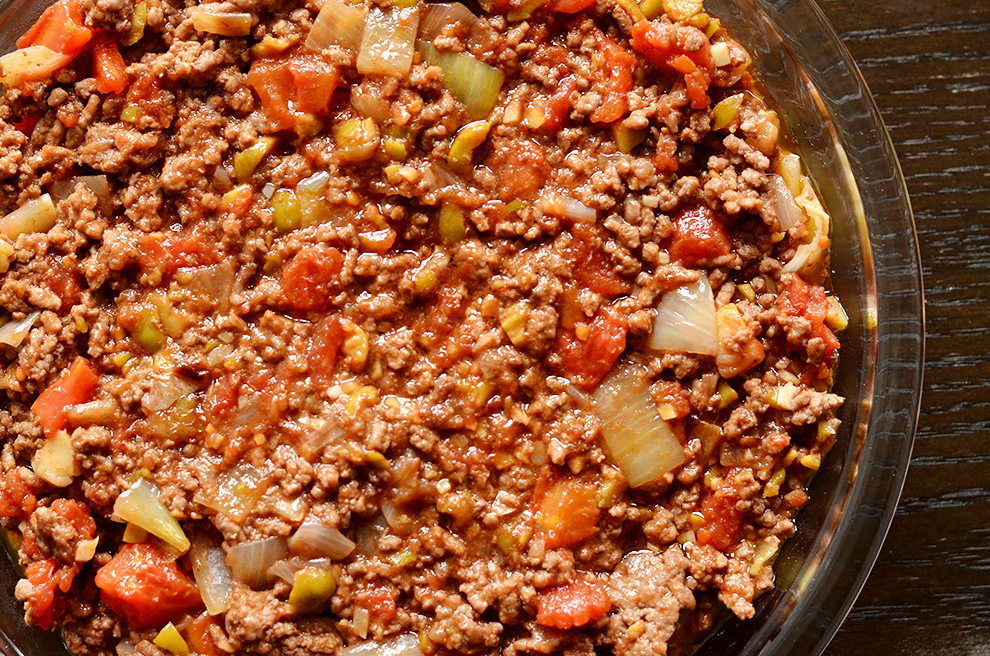
When you add the potatoes, spoon them evenly over the meat, then use the back of a spoon to smooth and flatten. Finally, brush them with a bit of olive oil.
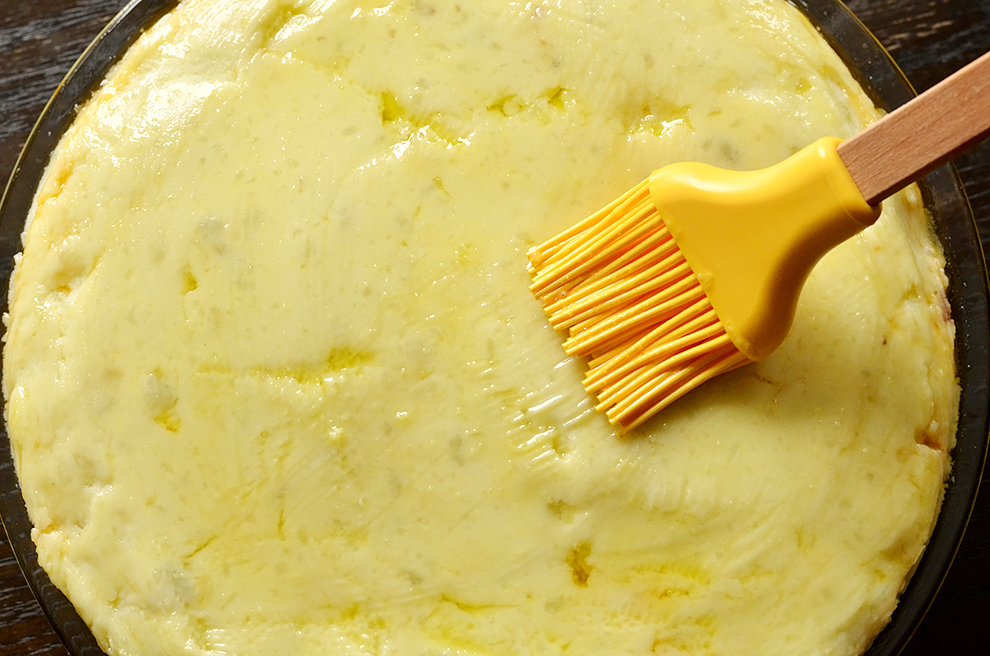
Bake just until the edges are golden brown.
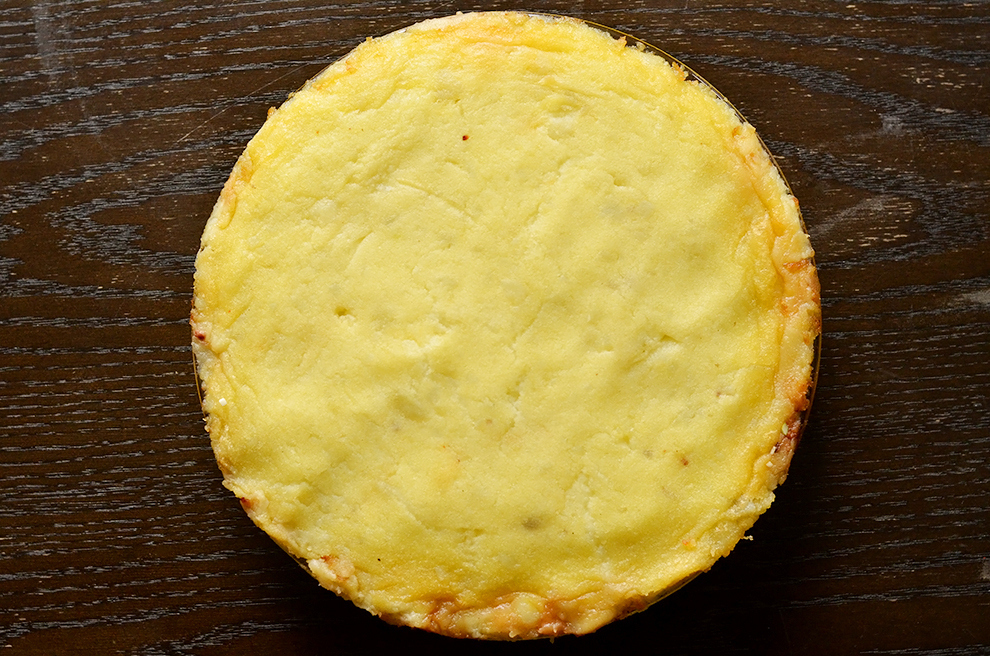
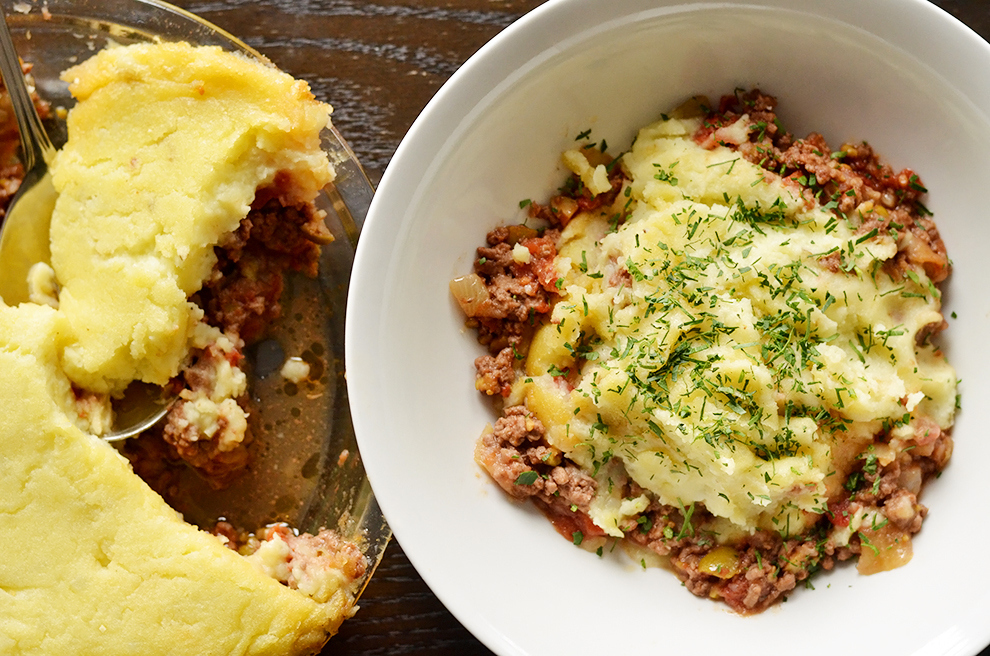

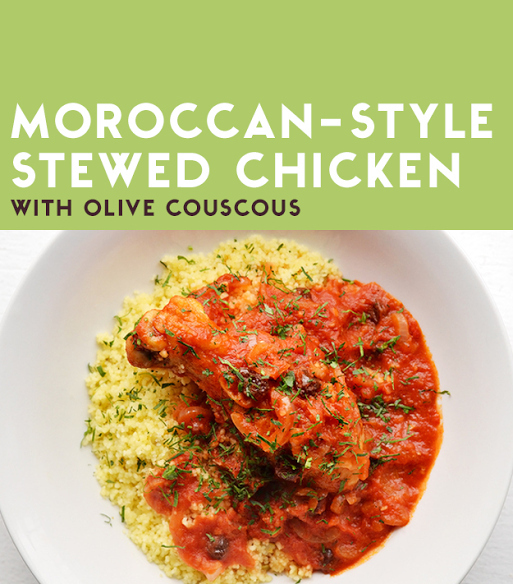
Moroccan-Style Stewed Chicken with Olive Couscous
Serves 4
Recipe by Teri Tsang Barrett
INGREDIENTS
2 tablespoons extra-virgin olive oil, plus more for the couscous
4 chicken drumsticks (about 1 pound)
Kosher salt
2 onions, thinly sliced
2 cloves garlic, minced
One 28-ounce can crushed tomatoes
3/4 cup raisins (about 3 ounces)
One 10-ounce box couscous
1/2 cup chopped green olives, plus 1/4 cup brine
Grated zest and juice of 1/2 lemon
1/4 cup loosely packed flat-leaf parsley leaves, chopped
PROCEDURE
In a dutch oven, heat 2 tablespoons olive oil over high heat. Season the chicken with salt, add to the dutch oven and brown, 2 minutes on each side. Remove to a plate.
Add the onion to the pot and cook, stirring, over high heat until softened, about 5 minutes. Add the garlic and cook until the garlic is fragrant, about 1 minute. Stir in the tomatoes, 2 cups water, raisins, and 1/2 teaspoon salt and bring to a boil; lower the heat to medium and cook 10 minutes. Add the chicken and cook, turning occasionally, until the chicken is cooked through, 35 to 45 minutes; if the sauce becomes too thick or begins to stick to the pan, add up to 1/2 cup water at a time to loosen.
Meanwhile, prepare the couscous in another pot according to package directions, but omit 1/4 cup water that's called for and add the olive brine instead, stirring the grated lemon zest and juice and chopped olives into the boiling water along with the couscous.
To serve, divide the couscous among four shallow bowls, top with the chicken stew, and sprinkle with the parsley.
Make sure to not crowd your chicken (there's plenty of room in the dutch oven for all four drumsticks).

Brown all sides, not just the top and the bottom.
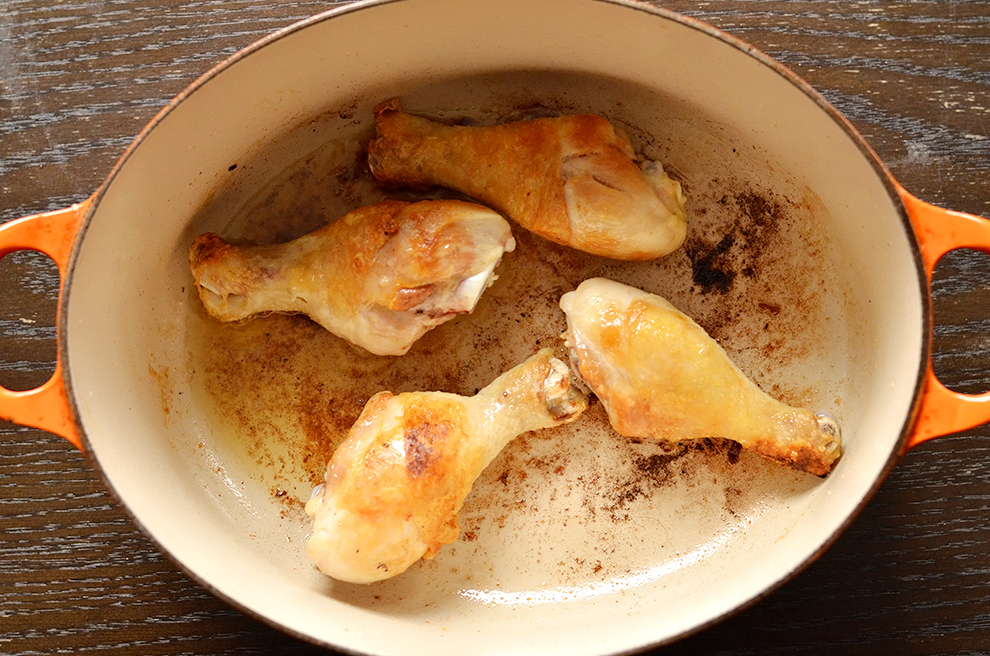
After you've removed the chicken, cook the onion and garlic in the same dutch oven, until soft.

Then, add canned tomatoes, raisins, and 2 cups of water, and simmer.

Let that mixture reduce and thicken a bit before you add your chicken.

As soon as your couscous is done, fluff* it with a fork. Otherwise, it'll stick together.

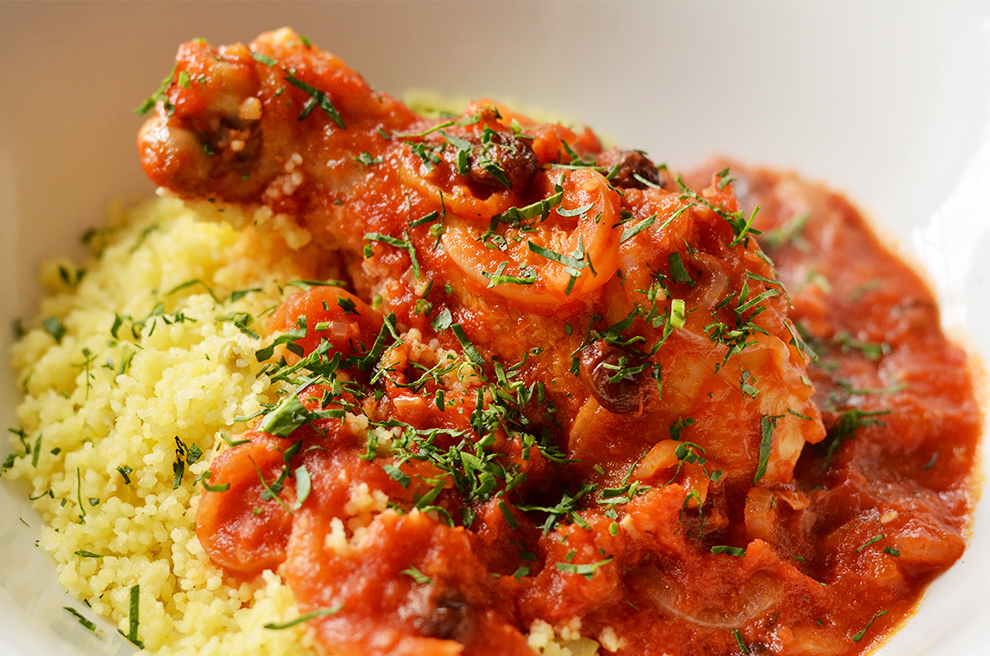
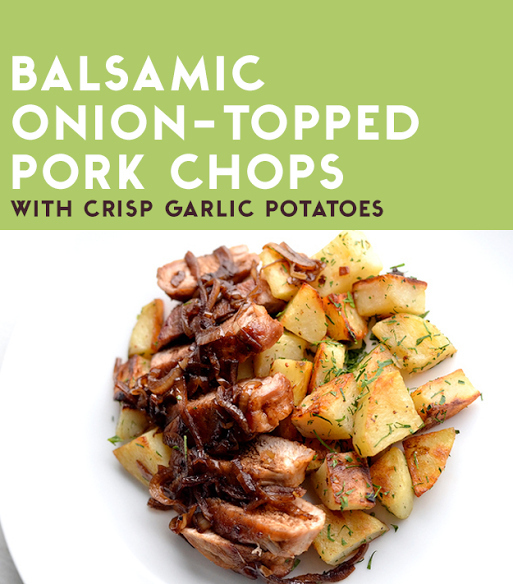
Balsamic Onion-Topped Pork Chops with Crisp Garlic Potatoes
Serves 4
Recipe by Teri Tsang Barrett
INGREDIENTS
2 pounds small russet potatoes (6 to 7)
1/2 cup extra-virgin olive oil
4 garlic cloves, minced
Kosher salt and freshly ground pepper
1/4 cup loosely packed flat-leaf parsley leaves, finely chopped
Four 4-ounce boneless pork chops
1/2 small onion, finely chopped
1/4 cup balsamic vinegar
PROCEDURE
Preheat the oven to 400˚F. Peel and cut the potatoes into 3/4-inch pieces and toss on a parchment paper-lined rimmed baking sheet with 5 tablespoons olive oil, the garlic and 1/2 teaspoon each salt and pepper. Spread in a single, even layer and roast, turning every 15 minutes, until browned and crisp, about 45 minutes. Transfer to a mixing bowl and toss with the parsley.
Meanwhile, in a large cast iron skillet*, heat the remaining 3 tablespoons olive oil over medium heat. Pat the the pork chops dry with paper towels, season with salt and pepper, then add to the pan and cook, turning once, until browned and cooked through, 3-4 minutes per side. Transfer to a cutting board and tent with foil to keep warm.
In the same skillet, add the onion and cook, stirring, over medium-high heat until softened and just browned, about 5 minutes. Add 2 tablespoons water, scraping up any browned bits from the bottom of the pan, then add the vinegar and bring to a boil; stir in any juices from the pork. Cook until thickened slightly and reduced to about 1/4 cup, 3 to 4 minutes.
Divide the pork and potatoes among 4 plates, then spoon the balsamic-onion sauce over the pork.
*Note: A cast iron skillet works best because it retains heat, which means your pan won't cool down as much after the pork is added and you'll end up with a better sear. But, if you don't have a cast iron you can use a 12-inch stainless steel skillet instead.
Make sure your potato chunks are all about the same size, and that everything is coated in plenty of olive oil.
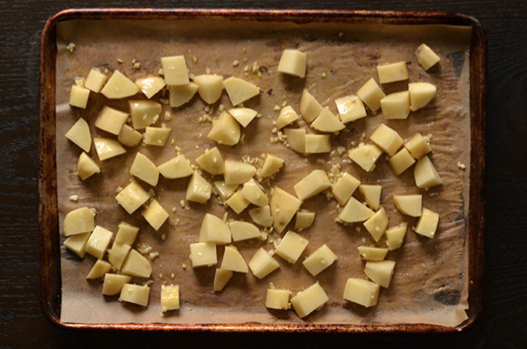
Halfway through cooking, shake the potatoes around the pan. They're done cooking when they're soft and golden brown.
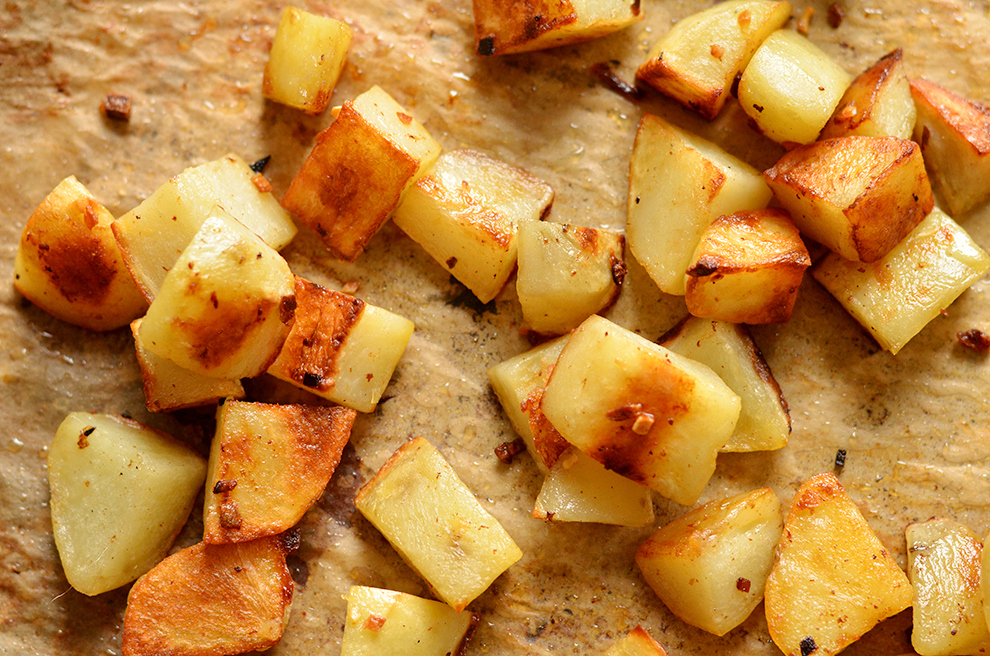
Get your cast iron skillet super hot before you add the pork.

Keep your flame high to get a good sear on both sides.
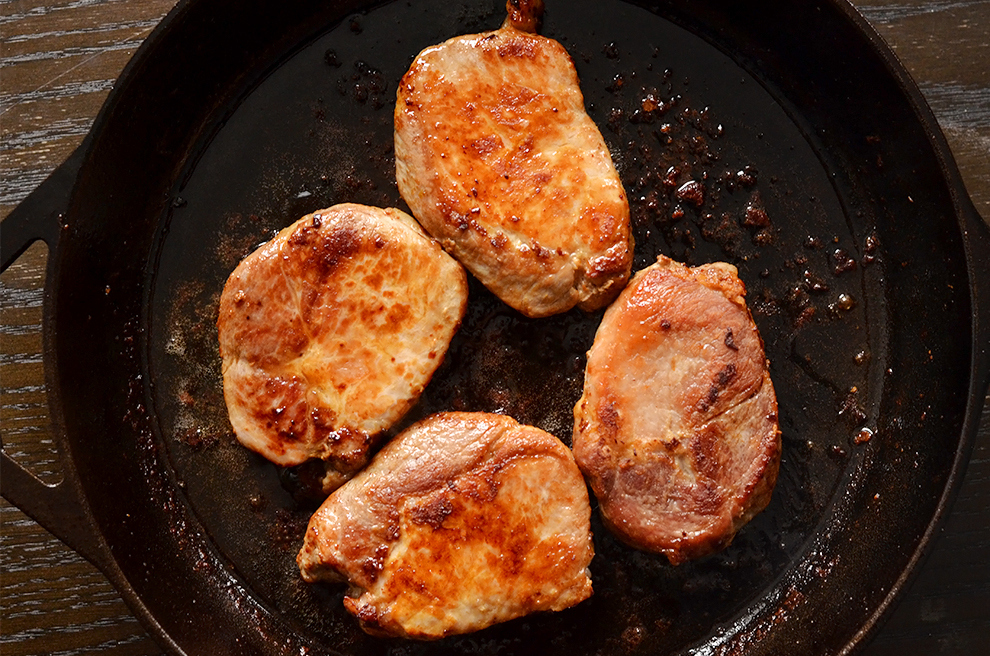
As soon as your pork is cooked, make your balsamic onion sauce. It's done when the onions are soft and the balsamic has reduced almost completely.
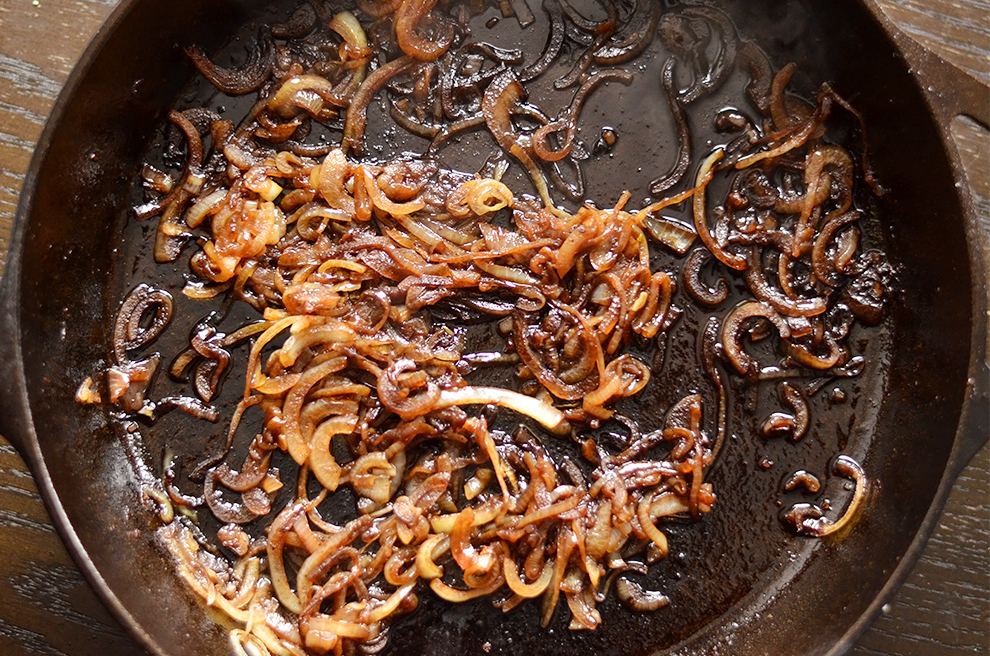
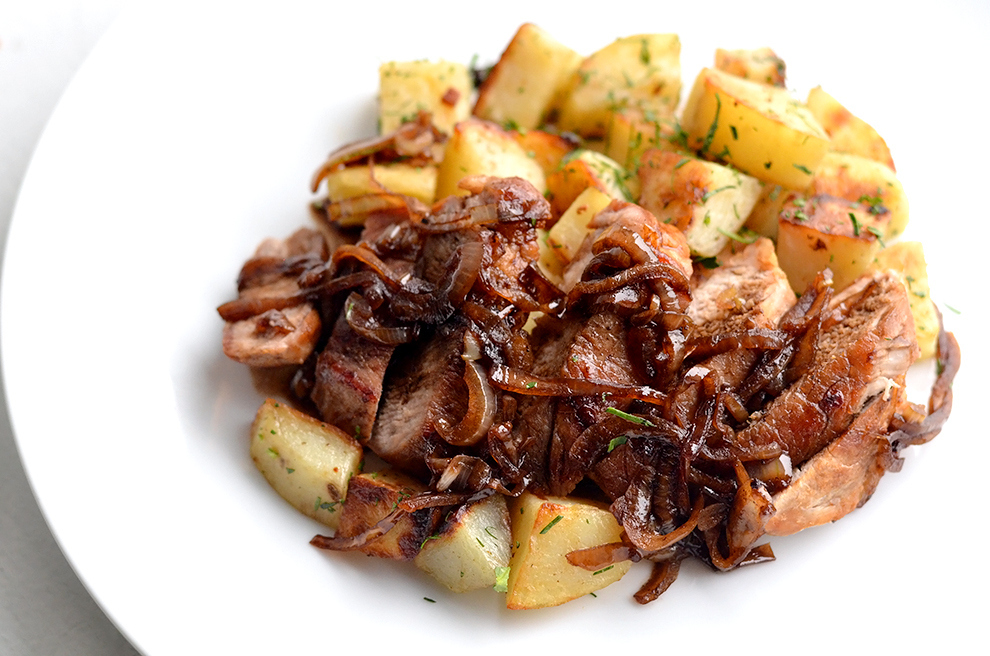

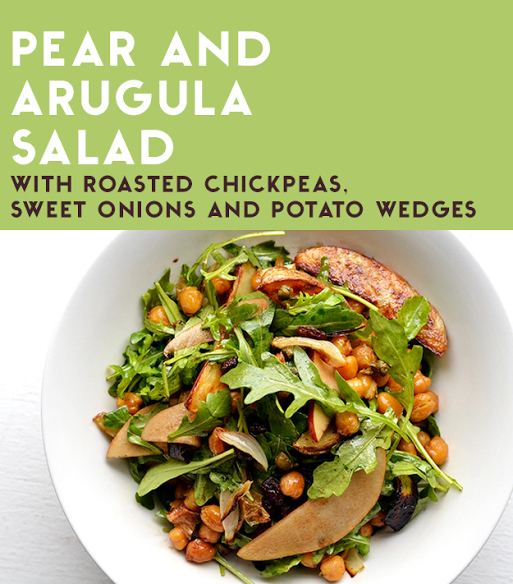
Pear and Arugula Salad with Roasted Chickpeas, Sweet Onions and Potato Wedges
Serves 4
Recipe by Teri Tsang Barrett
INGREDIENTS
2 onions, peeled, roots trimmed and left intact
1 pound russet potatoes (3 to 4), washed
7 tablespoons plus 1 teaspoon extra-virgin olive oil
Kosher salt and freshly ground pepper
1 15-ounce can chickpeas, rinsed, drained and patted dry
Grated zest of 1/2 lemon
3 tablespoons capers, drained
2 tablespoons balsamic vinegar
One 5-ounce package arugula
1 pear, cored and thinly sliced
2 ounces raisins (about 1/2 cup)
PROCEDURE
Preheat the oven to 400˚F. On a work surface, slice the onion lengthwise through the root into eighths, then repeat with the potatoes. Toss with the olive oil on a parchment paper-lined rimmed baking sheet and season with 1/2 teaspoon each salt and pepper. Arrange potatoes and onions in a single layer, reserving the bowl, and roast, turning once, until tender and golden brown, about 35 minutes. Let cool 15 minutes.
Meanwhile, toss the chickpeas with 1 tablespoon olive oil in the reserved bowl and season with the grated lemon zest and salt and pepper. Arrange in a single layer, reserving the bowl again, on a separate parchment paper-lined baking sheet and roast, stirring twice, until crisp, about 30 minutes. Let cool 15 minutes.
Toss the capers with 1 teaspoon olive oil in the reserved bowl. After 10 minutes of roasting the chickpeas, add the capers to the same baking sheet and roast, stirring halfway through, until some of the capers are crisp, 18 to 20 minutes; keep an eye on the capers during the last few minutes to prevent them from burning.
Pour the balsamic vinegar into a large mixing bowl. Gradually whisk in the remaining 3 tablespoons olive oil, beginning with a few drops and then working up to a slow, steady stream, until emulsified. Season with salt and pepper to taste. Add the arugula, then the pear slices and set aside until ready to toss.
Just before serving, add the roasted potatoes and onions to the salad bowl and toss to combine. Top with the roasted chickpeas and capers.
Don't crowd your roasting pan, and make sure your potato wedges are cut thin enough (no more than 1/3-inch thick) that they cook at the same speed as the onion.

Halfway through cooking, move the veggies around the roasting pan. When they're done, the edges will be deep brown.
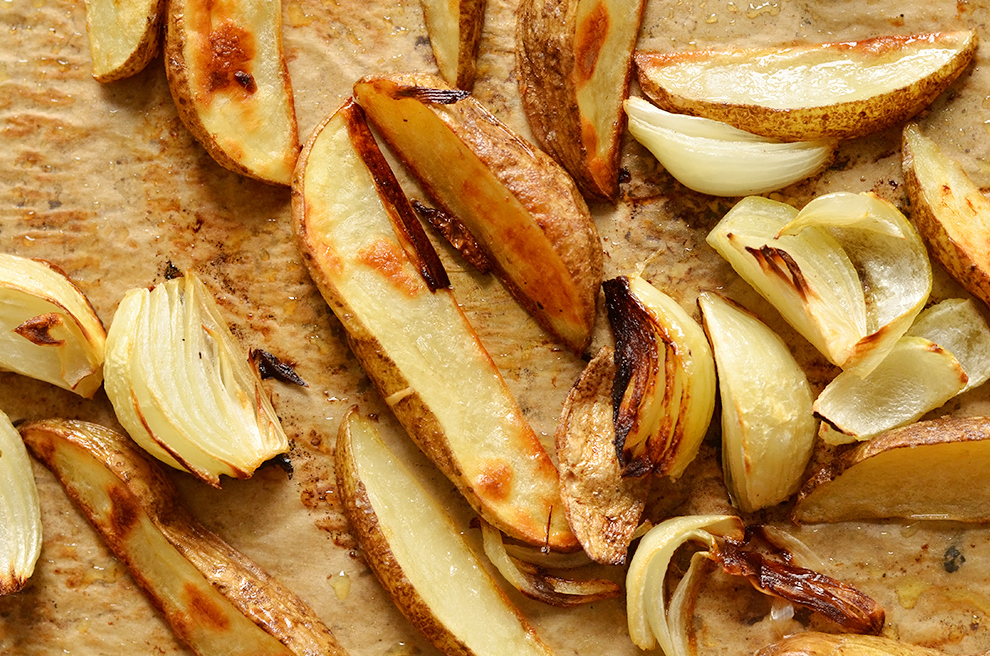
If you have two baking sheets, roast the chickpeas at the same time as you're roasting the potatoes and onions.

Add the capers after 10 minutes, then continue to roast until the capers are slightly shriveled and the chickpeas are golden and crisped on the outside.
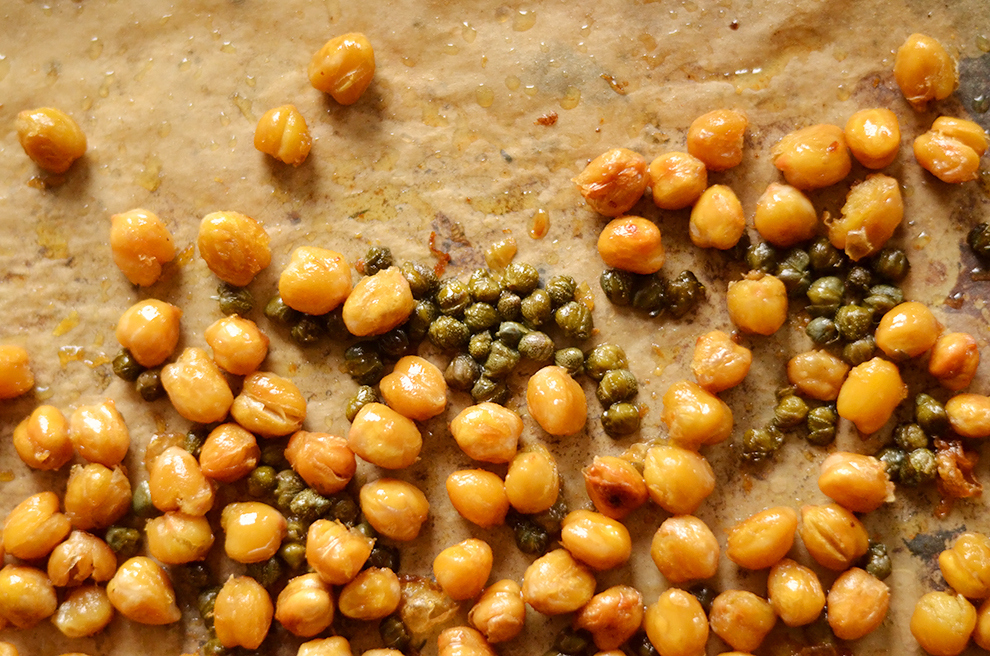
To make the vinaigrette, pour your balsamic vinegar into a small bowl, then start whisking vigorously and slowly pour in the olive oil.
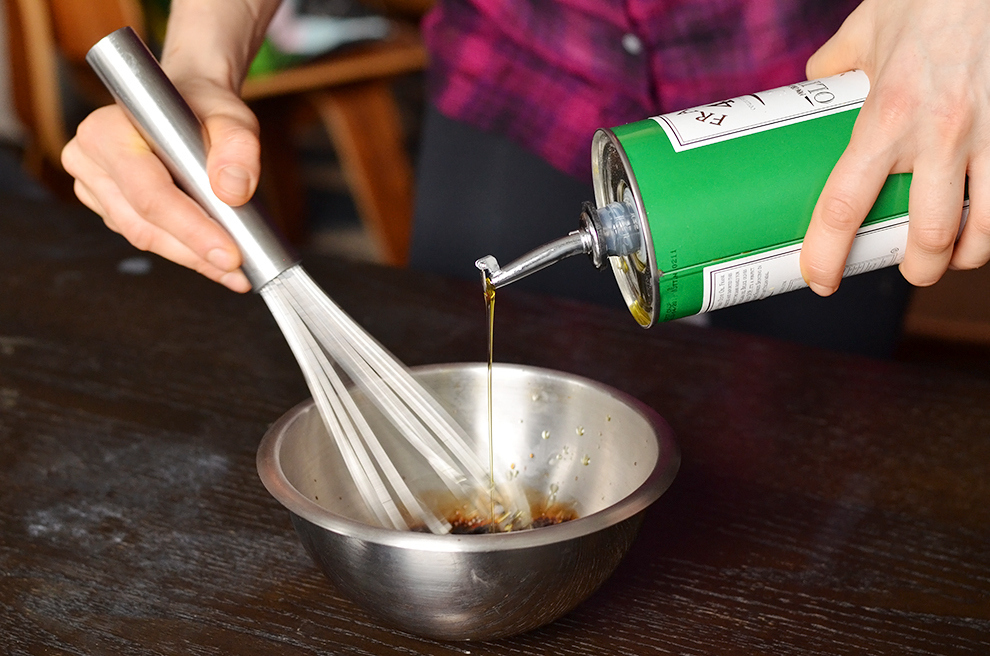
Toss thinly sliced pears, arugula, and vinaigrette together in a large bowl with some kosher salt and freshly ground pepper. If you don't end up using all the dressing, that's OK.
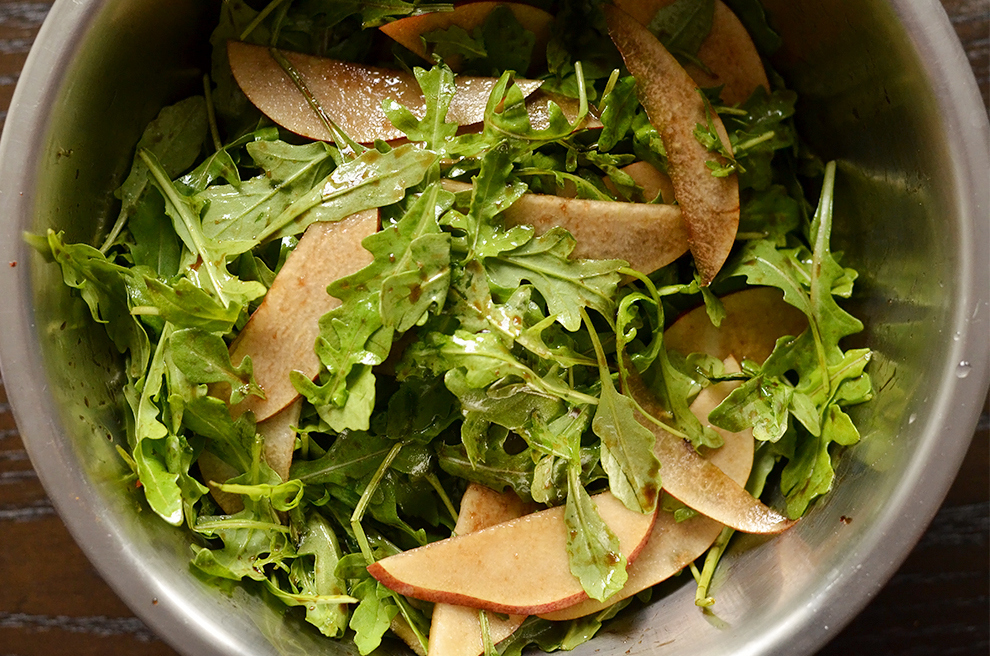
Add your raisins and roasted vegetables, and toss gently just to combine.

Finally, plate and garnish with the chickpeas and capers.


To cook these recipes, you'll use the following equipment.
1. Saucepan with lid (8–12-inch diameter)
2. 12-inch stainless steel skillet (or 12-inch cast iron skillet)
3. Colander or strainer
4. Large rimmed baking sheet
5. 9-inch pie plate, or similar baking dish (for shepherd's pie)
6. Large, medium, and small mixing bowls
7. Dutch oven (at least 5 quart volume)
8. 12-inch cast-iron skillet (or 12-inch stainless steel skillet)
9. Measuring spoons
10. Measuring cups
11. Can opener
12 Large cutting board
13. Vegetable peeler
3. Parchment paper
14. Fork
15. Potato masher (optional)
16. Slotted spoon
17. Whisk
18. Pastry or grill brush (optional, for shepherd's pie)
19. Chef's knife
20. Parchment paper
21. Fish spatula not pictured
